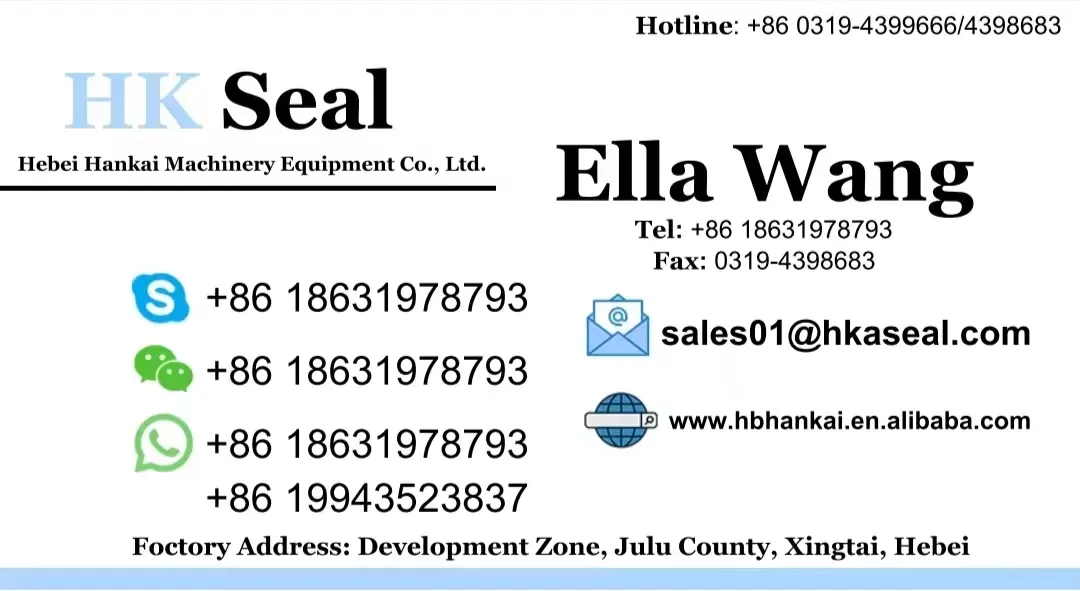វិច្ឆិកា . 11, 2024 15:25 Back to list
hydraulic oil seal sizes
Understanding Hydraulic Oil Seal Sizes
Hydraulic systems are integral components in various industrial applications, ranging from machinery and construction equipment to aerospace and automotive systems. One critical component of these systems is the hydraulic oil seal, which is essential for preventing fluid leakage, maintaining pressure, and ensuring that hydraulic machinery operates efficiently. A key factor in the effectiveness of these seals is their size, which must be chosen carefully to match the specifications of the hydraulic system.
Importance of Hydraulic Oil Seal Sizes
The size of hydraulic oil seals plays a pivotal role in their performance. An oil seal that is too small will not create a proper seal, leading to potential fluid leakage, which can cause pressure loss and component failure. Conversely, an oversized seal may result in excessive friction, increased wear, and premature failure of the seal itself. Therefore, understanding and selecting the correct size is crucial for the longevity and efficiency of hydraulic systems.
Common Measurements
The size of hydraulic oil seals is usually described by four key dimensions
1. Inner Diameter (ID) This is the diameter of the hole in the seal where the shaft passes through. It is critical that this measurement closely matches the diameter of the shaft to ensure a tight fit. 2. Outer Diameter (OD) The outer diameter is the total width of the seal. This measurement is just as important as the inner diameter because it should fit snugly into the housing or bore where the seal will be installed.
3. Width (W) The width of the seal is the thickness of the sealing component. If the width is too thin, it may not withstand the operational stresses; too thick of a seal may lead to improper sealing.
4. Lip Design While this is not a measurement, the design of the lip of the seal significantly affects its sealing capability. Different designs can enhance the seal's effectiveness under various conditions, such as high pressure or extreme temperatures.
hydraulic oil seal sizes

Factors Affecting Seal Size Selection
Several factors must be taken into account when selecting the appropriate hydraulic oil seal size
1. Operating Environment The working conditions, including temperature, pressure, and the type of hydraulic fluid, influence the choice of seal size and material.
2. System Design Each hydraulic system has unique design features that can dictate the most suitable seal size. Engineers must carefully analyze system specifications to make an informed decision.
3. Material Considerations Different seal materials (such as nitrile, fluorocarbon, and polyurethane) have different compressibility characteristics, which can affect how well a seal performs at various sizes.
4. Standards and Regulations Compliance with international standards (such as ISO or SAE) may also affect seal size selections. Standardization ensures compatibility and reliability in hydraulic applications.
Conclusion
Choosing the right hydraulic oil seal size is a fundamental aspect of ensuring the efficiency and reliability of hydraulic systems. Engineers and technicians must take a thorough, systematic approach to measure all relevant dimensions, consider operational conditions, and select suitable materials. By understanding the dynamics of hydraulic oil seal sizes and their impacts, industries can minimize maintenance costs, reduce downtime, and enhance the overall performance of their hydraulic machinery. Investing the time and resources to make precise seal size selections ultimately leads to increased productivity and operational success.
-
Unlocking the Potential of Hydraulic Systems with Essential Sealing Solutions
NewsAug.06,2025
-
Unleash the Power of Your Hydraulic Systems with Our Premium Seal Kits
NewsAug.06,2025
-
Specialized Hydraulic Seal Kits for Breakers, Pistons, and Presses
NewsAug.06,2025
-
Revitalize Hydraulic Systems with Premium Repair and Seal Kits
NewsAug.06,2025
-
Fortify Your Cylinders with Premium Sealing Solutions
NewsAug.06,2025
-
Elevate Hydraulic System Reliability with Specialized Seal Kits
NewsAug.06,2025
-
TCN Oil Seal Metal Ring Reinforcement for Heavy Machinery
NewsJul.25,2025
Products categories
















